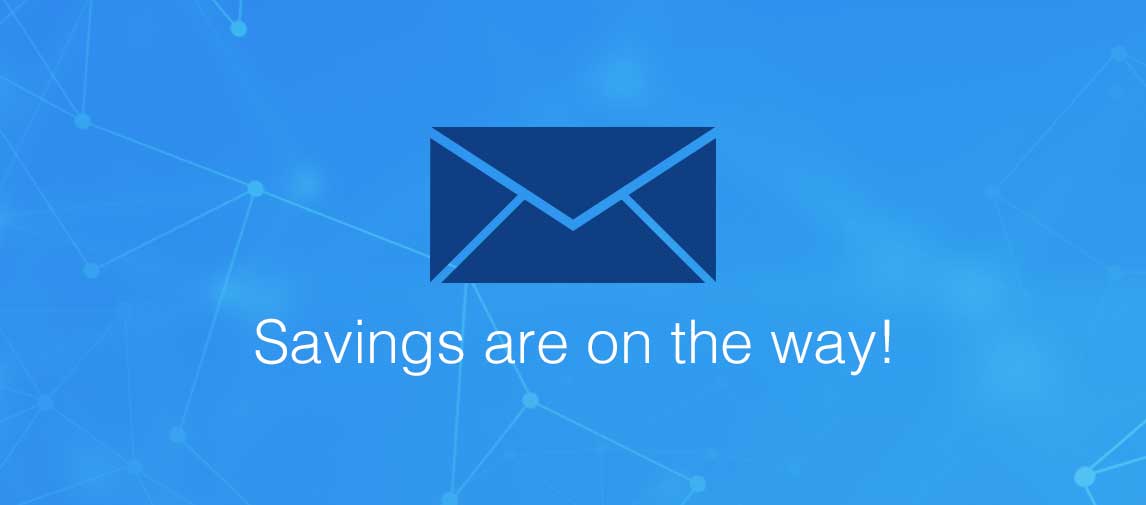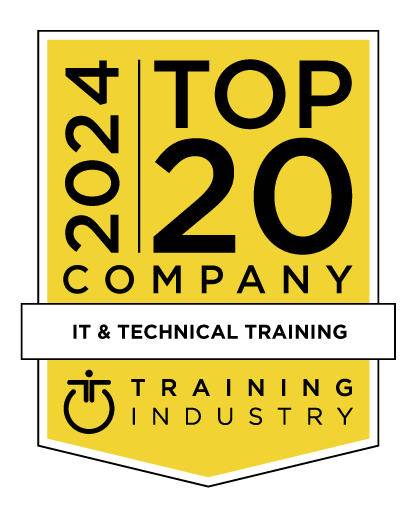title
Please take a moment to fill out this form. We will get back to you as soon as possible.
All fields marked with an asterisk (*) are mandatory.
Certified Cloud Security Professional
Course Description
Overview
The CCSP Exam Preparation course is an intensive, five-day examination preparation program to prepare individuals who are planning to sit for the Certified Cloud Security Professional (CCSP) exam. The course provides candidates with the techniques and strategies needed to defend against threats and also optimize Cloud Security. Upon completion of this interactive course, individuals will be able to respond to the ever-developing threat of security breaches and be able to utilize data discovery and classification technologies, execute secure jurisdictional data protection which is a prominent aim of all cloud servers and cloud-based architectures, that is becoming more apparent with the development of new stringent data protection laws. With constantly evolving cloud platforms, the importance of Cloud Security is continually elevating for organizations. This certification prepares delegates in order to ensure that they can implement secure cloud structures within their own organization.Objectives
- An understanding of the format and structure of the CCSP certification exam.
- A knowledge of the various topics and technical areas covered by the exam.
- Practice with specific strategies, tips and techniques for taking and passing the exam
- Opportunities to execute practice questions with debriefs of answers.
Audience
- Cloud Architect
- Cloud Engineer
- Cloud Consultant
- Cloud Administrator
- Cloud Security Analyst
- Cloud Specialist
- Auditor of Cloud Computing Services
- Professional Cloud Developer
Prerequisites
-
Candidates must have a minimum of five years cumulative paid work experience in information technology, of which three years must be in information security and one year in one or more of the six domains of the CCSP CBK. Earning CSA’s CCSK certificate can be substituted for one year of experience in one or more of the six domains of the CCSP CBK. Earning the CISSP credential can be substituted for the entire CCSP experience requirement.
A candidate that doesn’t have the required experience to become a CCSP may become an Associate of ISC2 by successfully passing the CCSP examination. The Associate of ISC2 will then have six years to earn the five years required experience.
Topics
- Understand cloud computing concepts
- Cloud computing definitions
- Cloud computing roles and responsibilities (e.g., cloud service customer, cloud service provider, cloud service partner, cloud service broker, regulator)
- Key cloud computing characteristics (e.g., on-demand self-service, broad network access, multi-tenancy, rapid elasticity and scalability, resource pooling, measured service)
- Building block technologies (e.g., virtualization, storage, networking, databases, orchestration)
- Describe cloud reference architecture
- Cloud computing activities
- Cloud service capabilities (e.g., application capability types, platform capability types, infrastructure capability types)
- Cloud service categories (e.g., Software as a Service (SaaS), o Infrastructure as a Service (IaaS), Platform as a Service (PaaS))
- Cloud deployment models (e.g., public, private, hybrid, community, multi-cloud)
- Cloud shared considerations (e.g., interoperability, portability, reversibility, availability, security, privacy, resiliency, performance, governance, maintenance and versioning, service levels and service-level agreements (SLA), auditability, regulatory, outsourcing)
- Impact of related technologies (e.g., data science, machine learning, artificial intelligence (AI), blockchain, Internet of Things (IoT), containers, quantum computing, edge computing, confidential computing, DevSecOps)
- Understand security concepts relevant to cloud computing
- Cryptography and key management
- Identity and access control (e.g., user access, privilege access, service access)
- Data and media sanitization (e.g., overwriting, cryptographic erase)
- Network security (e.g., network security groups, traffic inspection, geofencing, zero trust network)
- Virtualization security (e.g., hypervisor security, container security, ephemeral computing, serverless technology)
- Common threats
- Security hygiene (e.g., patching, baselining)
- Understand design principles of secure cloud computing
- Cloud secure data lifecycle
- Cloud-based business continuity (BC) and disaster recovery (DR) plan
- Business impact analysis (BIA) (e.g., cost-benefit analysis, return on investment (ROI))
- Functional security requirements (e.g., portability, interoperability, vendor lock-in)
- Security considerations and responsibilities for different cloud categories (e.g., Software as a Service (SaaS), Infrastructure as a Service (IaaS), Platform as a Service (PaaS))
- Cloud design patterns (e.g., SANS security principles, Well-Architected Framework, Cloud Security Alliance (CSA) Enterprise Architecture)
- DevOps security
- Evaluate cloud service providers
- Verification against criteria (e.g., International Organization for Standardization/International Electrotechnical Commission (ISO/IEC) 27017, Payment Card Industry Data Security Standard (PCI DSS))
- System/subsystem product certifications (e.g., Common Criteria (CC), Federal Information Processing Standard (FIPS) 140-2)
- Describe cloud data concepts
- Cloud data life cycle phases
- Data dispersion
- Data flows
- Design and implement cloud data storage architectures
- Storage types (e.g., long-term, ephemeral, raw storage)
- Threats to storage types
- Design and apply data security technologies and strategies
- Encryption and key management
- Hashing
- Data obfuscation (e.g., masking, anonymization)
- Tokenization
- Data loss prevention (DLP)
- Keys, secrets and certificates management
- Implement data discovery
- Structured data
- Unstructured data
- Semi-structured data
- Data location
- Plan and implement data classification
- Data classification policies
- Data mapping
- Data labeling
- Design and implement Information Rights Management (IRM)
- Objectives (e.g., data rights, provisioning, access models)
- Appropriate tools (e.g., issuing and revocation of certificates)
- Plan and implement data retention, deletion, and archiving policies
- Data retention policies
- Data deletion procedures and mechanisms
- Data archiving procedures and mechanisms
- Legal hold
- Design and implement auditability, traceability, and accountability of data events
- Definition of event sources and requirement of event attributes (e.g., identity, Internet Protocol (IP) address, geolocation)
- Logging, storage and analysis of data events
- Chain of custody and non-repudiation
- Comprehend cloud infrastructure and platform components
- Physical environment
- Network and communications
- Compute
- Virtualization
- Storage
- Management plane
- Design a secure data center
- Logical design (e.g., tenant partitioning, access control) Physical design (e.g., location, buy or build)
- Environmental design (e.g., Heating, Ventilation, and Air Conditioning (HVAC), multi-vendor pathway connectivity)
- Design resilient
- Analyze risks associated with cloud infrastructure and platforms
- Risk assessment (e.g., identification, analysis)
- Cloud vulnerabilities, threats and attacks
- Risk mitigation strategies
- Plan and implementation of security controls
- Physical and environmental protection (e.g., on-premises)
- System, storage and communication protection
- Identification, authentication and authorization in cloud environments
- Audit mechanisms (e.g., log collection, correlation, packet capture)
- Plan business continuity (BC) and disaster recovery (DR)
- Business continuity (BC) / disaster recovery (DR) strategy
- Business requirements (e.g., Recovery Time Objective (RTO), Recovery Point Objective (RPO), recovery service level)
- Creation, implementation and testing of plan
- Advocate training and awareness for application security
- Cloud development basics
- Common pitfalls
- Common cloud vulnerabilities (e.g., Open Web Application Security Project (OWASP) Top-10, SANS Top-25)
- Describe the Secure Software Development Life Cycle (SDLC) process
- Business requirements
- Phases and methodologies (e.g., design, code, test, maintain, waterfall vs. agile)
- Apply the Secure Software Development Life Cycle (SDLC)
- Cloud-specific risks
- Threat modeling (e.g., Spoofing, Tampering, Repudiation, Information Disclosure, Denial of Service, and Elevation of Privilege (STRIDE), Damage, Reproducibility, Exploitability, Affected Users, and o Discoverability (DREAD), Architecture, Threats, Attack Surfaces, and Mitigations (ATASM), Process for Attack Simulation and Threat Analysis (PASTA))
- Avoid common vulnerabilities during development
- Secure coding (e.g., Open Web Application Security Project (OWASP) Application Security
- Verification Standard (ASVS), Software Assurance Forum for Excellence in Code (SAFECode))
- Software configuration management and versioning
- Apply cloud software assurance and validation
- Functional and non-functional testing
- Security testing methodologies (e.g., blackbox, whitebox, static, dynamic, Software Composition Analysis (SCA), interactive application security testing (IAST))
- Quality assurance (QA)
- Abuse case testing
- Use verified secure software
- Securing application programming interfaces (API)
- Supply-chain management (e.g., vendor assessment)
- Third-party software management (e.g., licensing)
- Validated open-source software
- Comprehend the specifics of cloud application architecture
- Supplemental security components (e.g., web application firewall (WAF), Database Activity Monitoring (DAM), Extensible Markup Language (XML) firewalls, application programming interface (API) gateway)
- Cryptography
- Sandboxing
- Application virtualization and orchestration (e.g., microservices, containers)
- Design appropriate Identity and Access Management (IAM) solutions
- Federated identity
- Identity providers (IdP)
- Single sign-on (SSO)
- Multi-factor authentication (MFA)
- Cloud access security broker (CASB)
- Secrets management
- Build and implement physical and logical infrastructure for cloud environment
- Hardware specific security configuration requirements (e.g., hardware security module (HSM) and Trusted Platform Module (TPM))
- Installation and configuration of management tools
- Virtual hardware specific security configuration requirements (e.g., network, storage, memory, central processing unit (CPU), Hypervisor type 1 and 2)
- Installation of guest operating system (OS) virtualization toolsets
- Operate and maintain physical and logical infrastructure for cloud environment
- Access controls for local and remote access (e.g., Remote Desktop Protocol (RDP), secure terminal access, Secure Shell (SSH), console-based access mechanisms, jumpboxes, virtual client)
- Secure network configuration (e.g., virtual local area networks (VLAN), Transport Layer Security (TLS), Dynamic Host Configuration Protocol (DHCP), Domain Name System Security Extensions (DNSSEC), virtual private network (VPN))
- Network security controls (e.g., firewalls, intrusion detection systems (IDS), intrusion prevention systems (IPS), honeypots, vulnerability assessments, network security groups, bastion host)
- Operating system (OS) hardening through the application of baselines, monitoring and remediation (e.g., Windows, Linux, VMware)
- Patch management
- Infrastructure as Code (IaC) strategy
- Availability of clustered hosts (e.g., distributed resource scheduling, dynamic optimization, storage clusters, maintenance mode, high availability (HA))
- Availability of guest operating system (OS)
- Performance and capacity monitoring (e.g., network, compute, storage, response time)
- Hardware monitoring (e.g., disk, central processing unit (CPU), fan speed, temperature)
- Configuration of host and guest operating system (OS) backup and restore functions
- Management plane (e.g., scheduling, orchestration, maintenance)
- Implement operational controls and standards (e.g., Information Technology Infrastructure Library (ITIL), International Organization for Standardization/International Electrotechnical Commission (ISO/IEC) 20000-1)
- Change management
- Continuity management
- Information security management
- Continual service improvement management
- Incident management
- Problem management
- Release management
- Deployment management
- Configuration management
- Service level management
- Availability management
- Capacity management
- Support digital forensics
- Forensic data collection methodologies
- Evidence management
- Collect, acquire, and preserve digital evidence
- Manage communication with relevant parties
- Vendors
- Customers
- Partners
- Regulators
- Other stakeholders
- Manage security operations
- Security operations center (SOC)
- Intelligent monitoring of security controls (e.g., firewalls, intrusion detection systems (IDS), intrusion prevention systems (IPS), honeypots, network security groups, artificial intelligence (AI))
- Log capture and analysis (e.g., security information and event management (SIEM), log management)
- Incident management
- Vulnerability assessments
- Articulate legal requirements and unique risks within the cloud environment
- Conflicting international legislation
- Evaluation of legal risks specific to cloud computing
- Legal framework and guidelines
- eDiscovery (e.g., International Organization for Standardization/International Electrotechnical Commission (ISO/IEC) 27050, Cloud Security Alliance (CSA) Guidance)
- Forensics requirements
- Understand privacy issues
- Difference between contractual and regulated private data (e.g., protected health information (PHI), personally identifiable information (PII))
- Country-specific legislation related to private data (e.g., protected health information (PHI), personally identifiable information (PII))
- Jurisdictional differences in data privacy
- Standard privacy requirements (e.g., International Organization for Standardization/International Electrotechnical Commission (ISO/IEC) 27018, Generally Accepted Privacy Principles (GAPP), General Data Protection Regulation (GDPR))
- Privacy Impact Assessments (PIA)
- Understand audit process, methodologies, and required adaptations for a cloud environment
- Internal and external audit controls
- Impact of audit requirements
- Identify assurance challenges of virtualization and cloud
- Types of audit reports (e.g., Statement on Standards for Attestation Engagements (SSAE), Service Organization Control (SOC), International Standard on Assurance Engagements (ISAE))
- Restrictions of audit scope statements (e.g., Statement on Standards for Attestation Engagements (SSAE), International Standard on Assurance Engagements (ISAE))
- Gap analysis (e.g., control analysis, baselines)
- Audit planning
- Internal information security management system
- Internal information security controls system
- Policies (e.g., organizational, functional, cloud computing)
- Identification and involvement of relevant stakeholders
- Specialized compliance requirements for highly-regulated industries (e.g., North American Electric Reliability Corporation / Critical Infrastructure Protection (NERC / CIP), Health Insurance Portability and Accountability Act (HIPAA), Health Information Technology for Economic and Clinical Health (HITECH) Act, Payment Card Industry (PCI))
- Impact of distributed information technology (IT) model (e.g., diverse geographical locations and crossing over legal jurisdictions)
- Understand implications of cloud to enterprise risk management
- Assess providers risk management programs (e.g., controls, methodologies, policies, risk profile, risk appetite)
- Difference between data owner/controller vs. data custodian/processor
- Regulatory transparency requirements (e.g., breach notification, Sarbanes-Oxley (SOX), General Data Protection Regulation (GDPR))
- Risk treatment (i.e., avoid, mitigate, transfer, share, acceptance)
- Different risk frameworks
- Assessment of risk environment (e.g., service, vendor, infrastructure, business)
- Business requirements (e.g., service-level agreement (SLA), master service agreement (MSA), statement of work (SOW))
- Vendor management (e.g., vendor assessments, vendor lock-in risks, vendor viability, escrow)
- Contract management (e.g., right to audit, metrics, definitions, termination, litigation, assurance, compliance, access to cloud/data, cyber risk insurance)
- Supply-chain management (e.g., International Organization for Standardization/International Electrotechnical Commission (ISO/IEC) 27036)
Related Courses
-
CC Certified in Cybersecurity
ISC2-CC- Duration: 2
- Delivery Format: Exam Vouchers, Self-Paced Training
- Price: 0.00 USD
-
Certified Cloud Security Professional (Online Self-Paced)
ISC2-CCSPsp- Duration: 1 Day
- Delivery Format: Self-Paced Training
- Price: 895.00 USD
Self-Paced Training Info
Learn at your own pace with anytime, anywhere training
- Same in-demand topics as instructor-led public and private classes.
- Standalone learning or supplemental reinforcement.
- e-Learning content varies by course and technology.
- View the Self-Paced version of this outline and what is included in the SPVC course.
- Learn more about e-Learning
Course Added To Shopping Cart
bla
bla
bla
bla
bla
bla
Self-Paced Training Terms & Conditions
Exam Terms & Conditions
Sorry, there are no classes that meet your criteria.
Please contact us to schedule a class.

STOP! Before You Leave
Save 0% on this course!
Take advantage of our online-only offer & save 0% on any course !
Promo Code skip0 will be applied to your registration
Purchase Information
title
Please take a moment to fill out this form. We will get back to you as soon as possible.
All fields marked with an asterisk (*) are mandatory.










